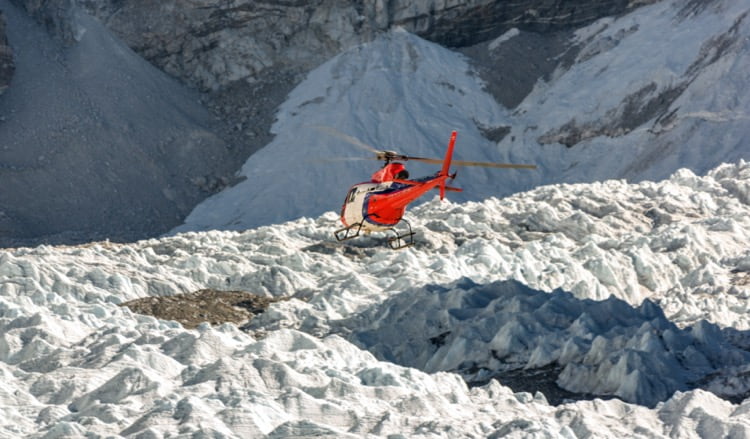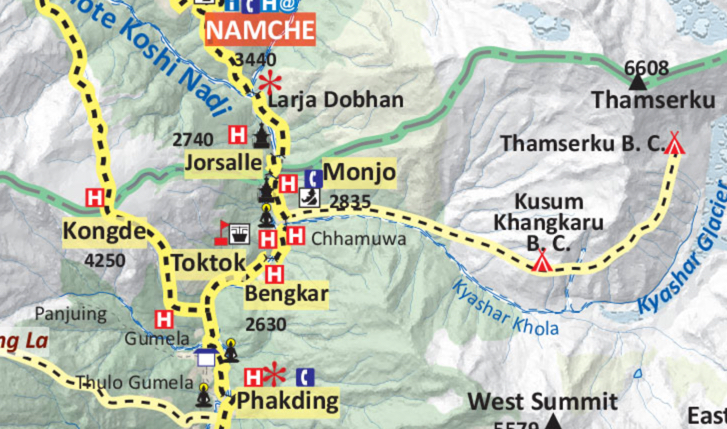Luxury Everest Base Camp Trek with Helicopter Back to Kathmandu
Request a Quote (?)
- Satisfied Client
- Personalised Guide
- Instant Response
Get Instant Response:
+977-9851329446 (Whatsapp)
| Starts at: Lukla | Ends at: Lukla |
| Trek Region: Everest | Transport: Flight |
| Duration: 10 Days | Trip Grade: Strenuous |
| Max Altitude: 5555m/18225ft | Accommodation: Teahouse |
Trekking to Everest Base Camp is an experience. But it’s a hard one. This is a challenging trek for sure and not to be taken lightly. A certain level of fitness is required. But what if you could reduce the trekking time by 3 days and still see all the wonders and mountains that are found in this part of the world? Wouldn’t that be perfect!
On this trip, there are 6 days of trekking, plus two acclimatization days. Then simply fly back by helicopter from Gorakshep, which is very near to Base Camp and where it is suitable for helicopters to land. In this way, you visit all the iconic places on this route by have less walking involved.
Luxury EBC Heli Return Trek Highlights
- Fly into the famous and exceedingly high altitude Hilary Tenzing Airport at Lukla by fixed-wing plane.
- Fly from the base of Mount Everest by helicopter back to Kathmandu, reducing walking days by three.
- Be inspired and amazed at the close-up views of Mt Everest.
- Watch the sunset over Everest from Kalapatthar, the Everest viewpoint.
- Be spiritually moved at Tengboche Monastery, the highest monastery in the Khumbu.
- eel the chill you get from gazing at the Khumbu Glacier and Icefalls.
- Learn about Sherpa peoples and their lifestyles.
- Walk in the steps of past climbing expeditions.
- Enjoy the unique and exquisite flora and fauna of Sagarmatha National Park.
- Relax in the comfortable Yeti Mountain Home lodges, the best accommodation in the Everest Region.
This trek is as good as it gets. You will enjoy the thrills and achievement you feel trekking to Everest Base Camp and will stay in some of the best lodges in the region. And what is more, you will have the pleasure and excitement of flying out over the mountains, including Mt Everest, by helicopter. In three villages, namely Phakding and Namche Bazaar you will be staying in the Yeti Mountain Home luxury lodges while in other villages we will provide you with the best available accommodation. While nothing like the luxury of the YMH lodges, these will be comfortable and welcoming at the end of a day’s trek.
You will enjoy the short flight by fixed-wing into Lukla airport. At 2,860m the Hilary Tenzing Airport sits in the heart of the mountains. After arriving in the early morning the first day’s trek is to Phakding, about 4 hours away. Here you can relax for the rest of the day in the riverside lodge, Phakding Yeti Mountain Home.
From now you will be walking around 5 hours a day with one long but the rewarding day when we will get really close to Everest! The trails pass through forests of alpine along raging rivers and through picturesque Sherpa villages. In the well-known market town of Namche Bazaar, we have two nights, allowing us to acclimatize to the altitude. Yeti Mountain Home welcomes us again with a spa and wellness centre and a well-stocked bar. On our acclimatization day, it is possible to hike to Khumjung Village to visit the school set up by Sir Edmund Hillary. The best way to acclimatize is to keep active, so not just sitting around! After all, this is your trip of a lifetime and you should take advantage of every moment.
Our first great panoramic view of the mountains comes at Tengboche Monastery. Magical views of Mt Everest, Ama Dablam, Thamserku, Nuptse and Lhotse are there for us to marvel at and photograph. It is possible to meet some of the monks living here and perhaps enjoy a cup of tea with them.
Flora and fauna is unique in this region – as you might anticipate. In fact, you are walking in the Sagarmatha National Park and the Sacred Himalayan Landscape initiative of the World Wildlife Fund.
The trails continue passed glaciers and icefalls and take you up to Kalapatthar, otherwise known as the Everest Viewpoint. You feel extremely close to both Everest and heaven here. Well, at least you are really close to the first! The views are beyond words, you simply have to experience it yourself. Everest, Mount Pumori and Ama Dablam are all there waiting for you.
You might be glad to know that after this ardours day, your experience continues not with hiking another 3 days back down to Lukla, but by boarding a helicopter! This exciting addition to your trek is both another way to view the mountains and a less muscle-ache intensive way to end your trip!
Luxury EBC Heli Trek Itinerary
Day 1: Welcome to Kathmandu!
Kathmandu
Day 2: Kathmandu to Lukla Flight and Trek to Phakding
Phakding – 2651 m / 8697 ft – 35 min + 3 hrs
Day 3: Phakding to Namche
Namche – 3440 m / 11286 ft – 5 to 6 hrs
Day 4: Acclimatization Day in Namche
Namche – 3700 m / 12139 ft – 4 to 5 hrs
Day 5: Namche to Tengboche
Tengboche – 3956 m / 12979 ft – 5 to 6 hrs
Day 6: Tengboche to Dingboche
Dingboche – 4380 m / 14370 ft – 4 to 5 hrs
Day 7: Acclimatization Day in Dingboche
Dingboche – 4380 m / 14370 ft – 3 to 4 hrs
Day 8: Dingboche to Lobuche
Lobuche – 4938 m / 16200 ft – 4 to 5 hrs
Day 9: Lobuche to Gorakshep
Gorakshep – 5160 m / 16929 ft – 2 to 3 hr + 4 hr
Day 10: Trek Gorakshep to Base Camp and back then Fly by Helicopter from Gorakshep to Kathmandu
Kathmandu – 4 hrs + 3 hrs (flight)
Day 1: Arrival in Kathmandu
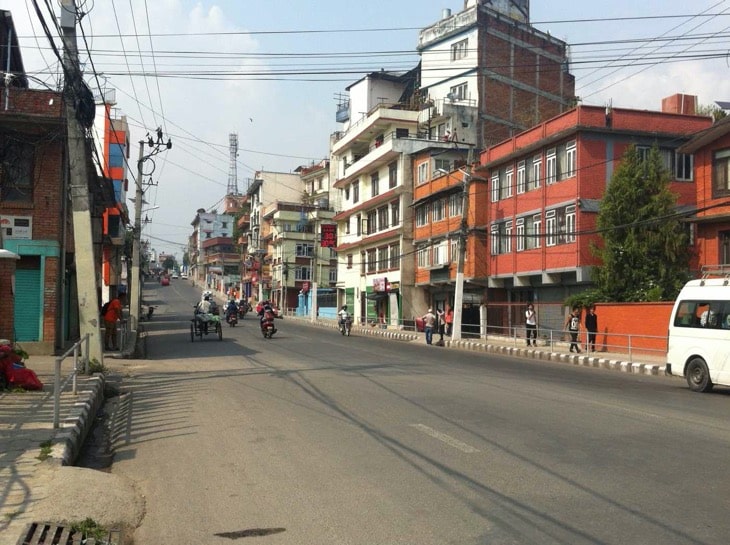
- Accommodation: Overnight in Aloft by Marriott/ Hotel Mulberry or similar
You will be met at the Tribhuvan International Airport by our staff or representative who will take you to your hotel.
Your hotel is in Thamel, the heart of tourism in Kathmandu with its bars, shops and restaurants. This is a great area to buy souvenirs or purchase some snacks for your trip.
This evening meet and ask questions of your guide.
Day 2: Kathmandu to Lukla Flight and Trek to Phakding
- Transport: Flight (30 min)
- Trek time: 3 to 4 hours
- Accommodation: Yeti Mountain Home
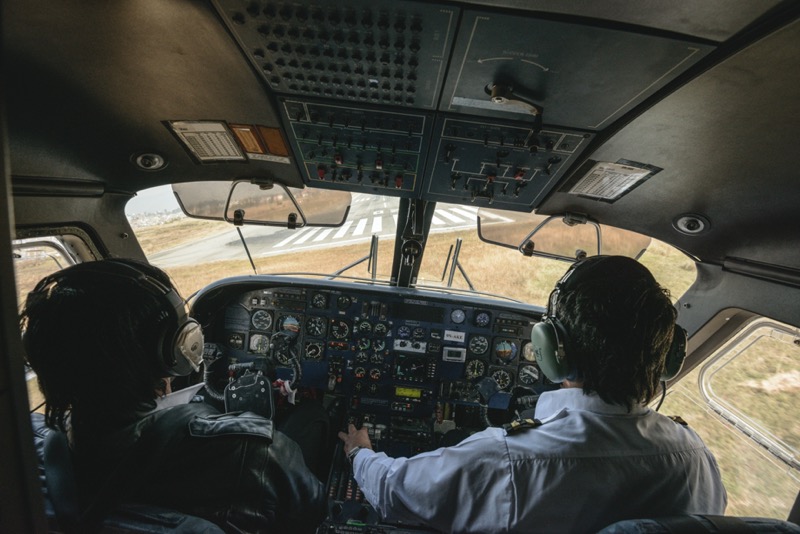
A change of regulations makes it very possible that flights to Lukla will operate from Manthali Airport in Ramechhap District.
This journey will take four hours by road from Kathmandu to Manthali during the night. Night travel is required as there are no hotels in Mathai and the flights to Lukla all leave in the early morning.
The flight itself is a spectacular and exciting 20 minutes through the mountains. On arrival in Lukla, we start our trek with a 3 to 4-hour hike to Phakding Village where we stay in the luxurious Yeti Mountain Home lodge.
Note: if you wish to avoid the 4-hour road journey, talk to us about taking a helicopter directly from Kathmandu to Lukla. An additional charge will be made for this service.
Day 3: Phakding to Namche
- Trek time: 5 to 6 hours
- Accommodation: Yeti Mountain Home
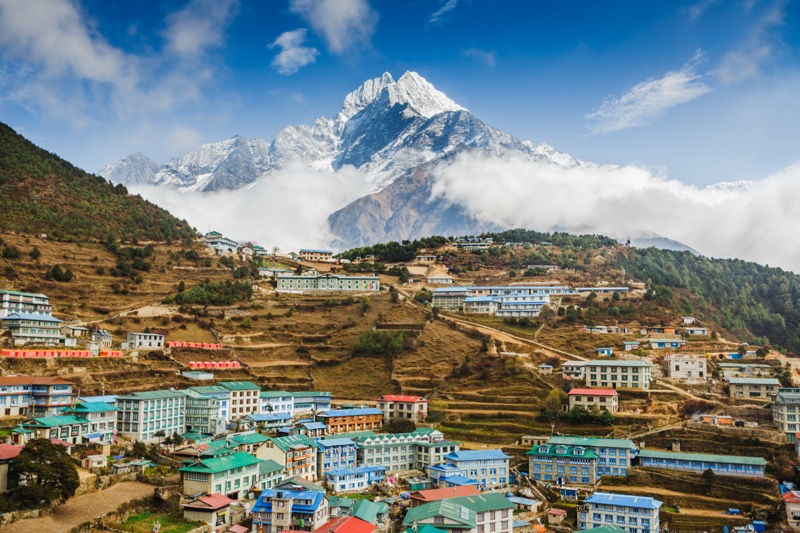
Today we walk through forests and over yak pastures and then enter Sagarmatha National Park. Our hike takes us onwards to Namche Bazaar, the biggest Sherpa town in the region. Here we also stay in the luxurious Yeti Mountain Home lodge which will be our home for two nights.
Day 4: Acclimatization Day in Namche Bazar
- Trek time: 5 to 6 hours
- Accommodation: Yeti Mountain Home
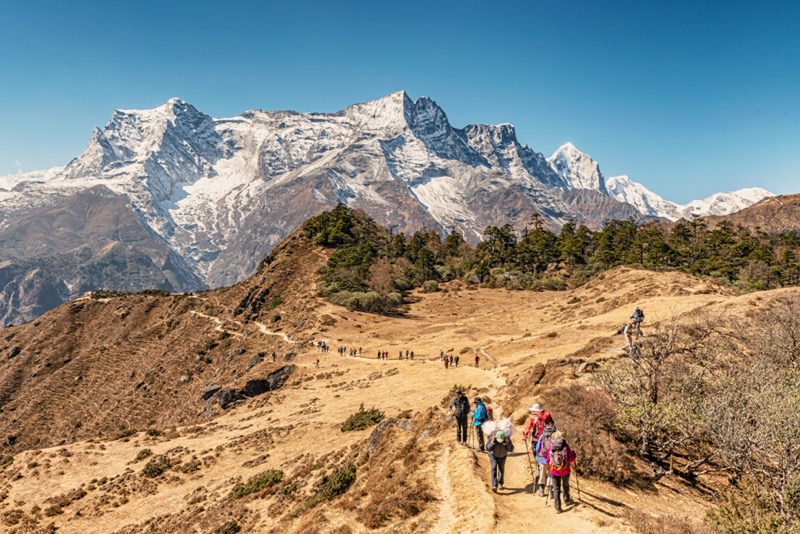
Now we are on the borderline of what is considered ‘high altitude’. So we take an acclimatization day in Namche. But that doesn’t mean we are just going to laze around!
Since the best way to acclimatize is to be active we will hike to Khumjung Village. Here we can see the school Sir Edmund Hillary set up for the local Sherpa children.
And of course spend time gazing at the wonders of nature: Kwangde (6,011m), Thamserku (6,623m), Kangtega (6,782m), Nuptse (7,861m), Lhotse (8,516m), Ama Dablam (6,812m) and Mount Everest (8,848m).
Day 5: Namche to Tengboche
- Trek time: 5 to 6 hours
- Accommodation: Tea House
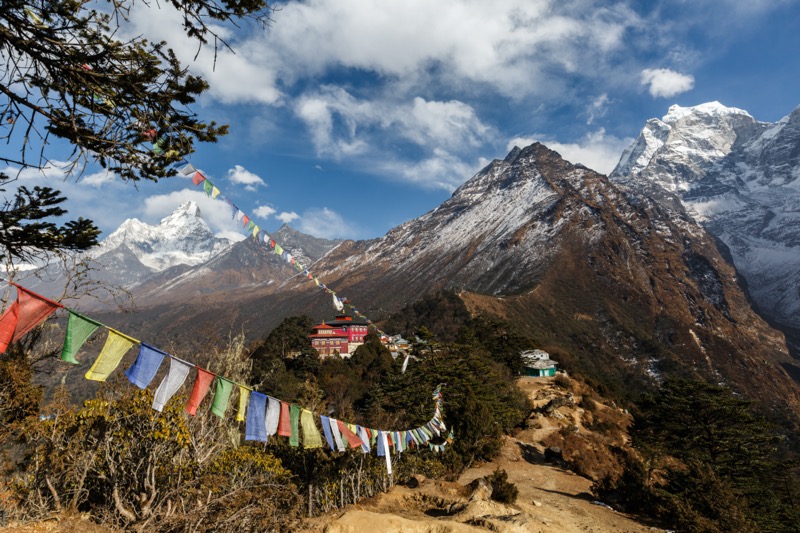
Today we walk on passed Buddhists shrines known as stupas, and walls with Buddhist prayers carved into them which are called Mani walls. The Buddhist prayer flags dancing colourfully in the wind set the mood for our visit to Tengboche Monastery. The panoramic view from the monastery is overwhelming!
Day 6: Tengboche to Dingboche
- Trek time: 4 to 5 hours
- Accommodation: Tea House
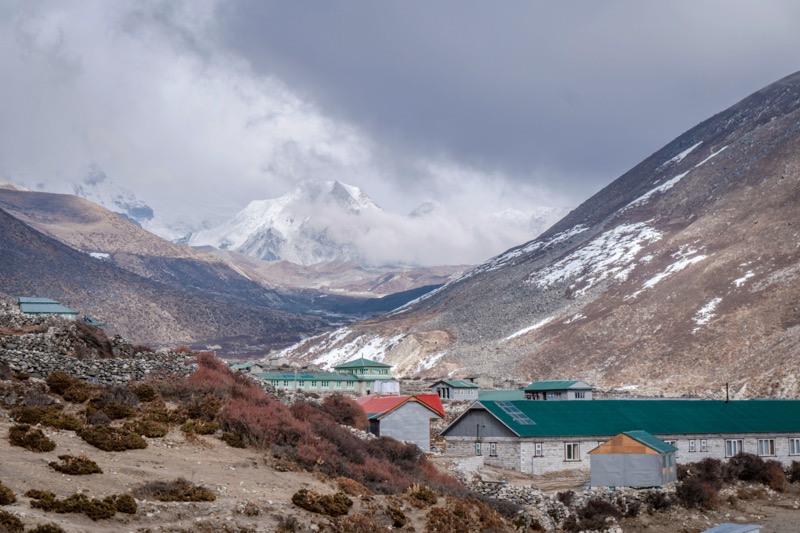
Today’s hike is quite hard and a bit of a challenge! We follow along the banks of the Imja River before climbing up to desolate potato fields.
Dingboche is the highest Sherpa village in the region and is treated to fantastic views of Ama Dablam. We will reach here by lunchtime so have free time in the afternoon to take in the village and the scenery.
Day 7: Acclimatization Day in Dingboche
- Trek time: 4 to 5 hours
- Accommodation: Tea House
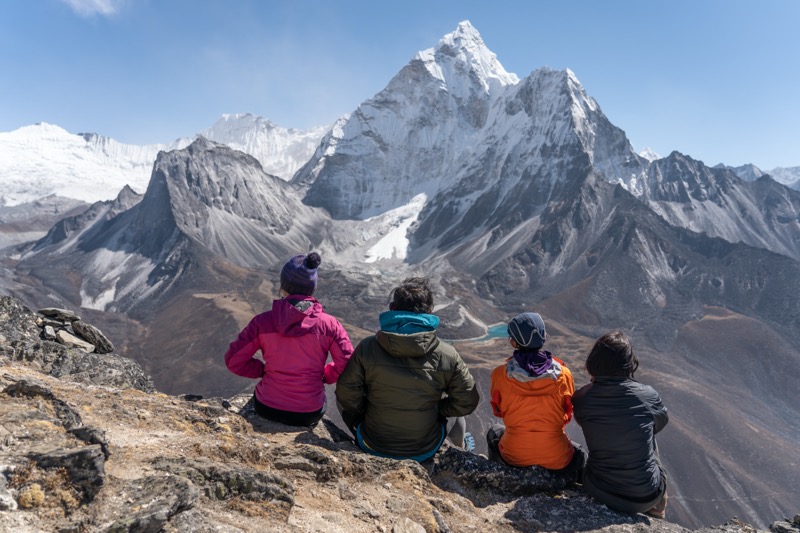
Today we have another acclimatization day which is so necessary for our continued good health.
There are a few hikes which are possible, such as the 4 to 5 hour round trip to the base of Nangkar Tshang Peak. Mt Makalu is stunning from this angle and the many sacred sites here seem to add to the atmosphere.
Day 8: Dingboche to Lobuche
- Trek time: 4 to 5 hours
- Accommodation: Tea House
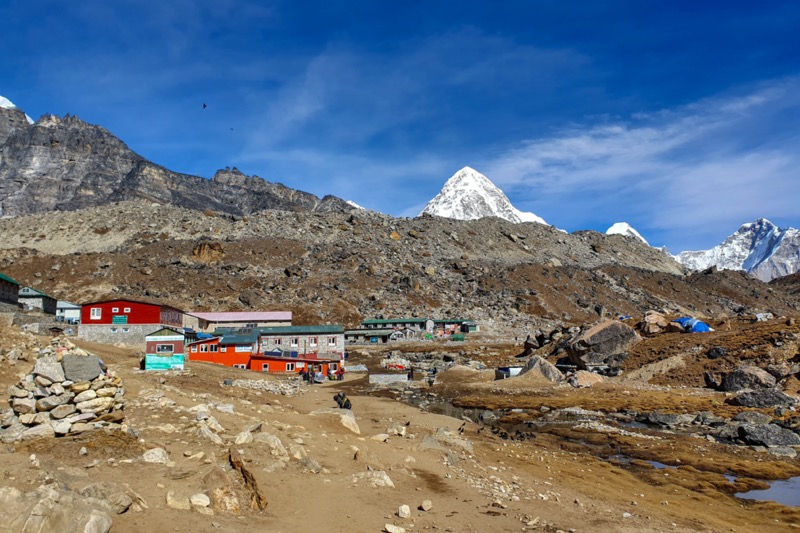
After a relatively gentle climb, we reach the Pheriche Valley. The trail then goes through yak pastures and alpine scrub before reaching Thokla Pass. On view are some of the bigger peaks such as Nuptse and Lhotse Shar. Several other 7,000m peaks also tower overhead. Crossing over the pass we reach Lobuche where we stop for the night.
Day 9: Lobuche to Gorakshep
- Trek time: 2 to 3 hours + 4 hours
- Accommodation: Tea House
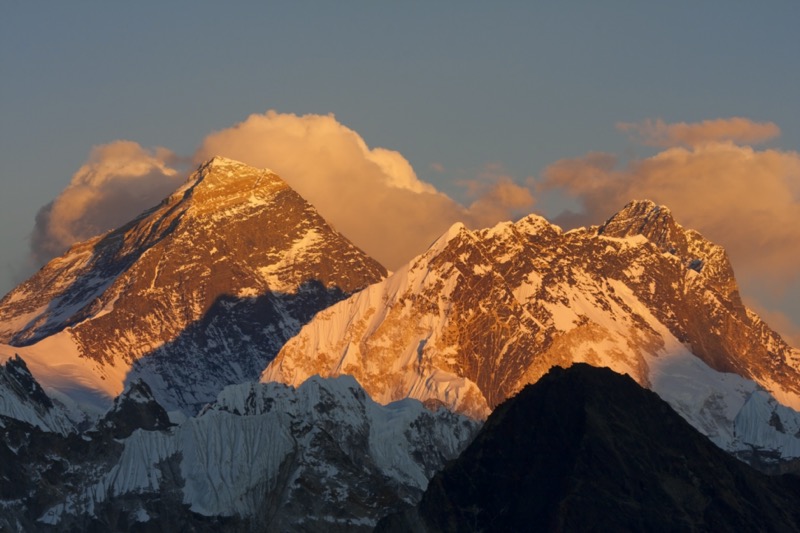
This is the day we ascend to the wonderful Everest viewpoint or Kalapatthar as it is known locally. Crossing rough terrain we reach Gorakshep, a small settlement where we have lunch. Then we march upwards to Kalapatthar at 5,545m. The name Kalapatthar means black rock. It is not a mountain, but a ridge whose location gives us the most spectacular and close up views of Mount Everest. Sunset is a particularly spiritual experience!
Day 10: Gorakshep to Base Camp and back then Fly by Helicopter from Gorakshep to Kathmandu
- Trek time: 4 hours + 2 hours flight
- Accommodation: Aloft by Marriott/ Hotel Mulberry or similar

This morning we trek to Everest Base Camp itself! Today is the mind-blowing climax of your Everest experience. It will take us 3 to 4 hours to trek to base camp and back to Gorakshep.
While at base camp, surrounded by the most majestic mountains in the world, the opportunity for great photography is astounding. We would like to realise this base camp is not exactly the spot where climbing expeditions are setting up camp. We will be able to see the camps ahead of us but we do not go there.
The reason for this is not to disturb them in their preparations to summit the highest mountain in the world and not to pass on any colds or flu we may have. But we have the exact same astounding views from our vantage point!
After breakfast at Gorakshep, our helicopter will pick us up for an amazing journey through the mountains. This is a very different aspect which no trekker gets to see. Whether you have been in a helicopter before or not, this is something simply unique and very personal experience. This first, high altitude helicopter will drop us at Lukla where we will change into another helicopter for our final flight to Kathmandu.
It takes xxx minutes to fly to Lukla and another. 20 minutes to fly back to Kathmandu. After landing in Kathmandu we will take you to your hotel. You are free now to enjoy the rest of the day before our farewell dinner this evening.
Day 11 Departure from Kathmandu
After breakfast, our staff will take you to Tribhuvan International Airport for your onward flight.
If you are staying longer in Nepal, please note hotel check out is at 11/12 am.
Meals: breakfast only
Not satisfied with this Itinerary?
Are you interested on planning custom trip? It only takes 2 minutes.
Includes
- Local transfers for your international flight x 2 (arrival/ departure)
- Local transfers for your domestic flights x 2
- Kathmandu Lukla Kathmandu flight
- Sagarmatha National Park Entry Park and Local Entry Permits
- Guide for 10 days
- Porter for 11 days
- 2 nights accommodation in a Kathmandu (Aloft by Marriott/ Hotel Mulberry or similar)
- 11 nights accommodation in best hotel/teahouse while on trek
- Staff insurance and necessary ground transport for support staff
- Helicopter from Gorakshep to Kathmandu
- 10 x set breakfast, 10 x set lunch and 9 x set dinner while on the trek
- Tip to Guide and Porter
- Personal travel insurance (Which should include coverage for trekking)
- Lunches and dinners in Kathmandu
- Personal gear for trekking (Including any you may wish to hire in Kathmandu), any personal expenses (i.e. soft and alcoholic drinks, snacks etc.)
Luxury Everest Heli Return Trek Map
Related Trip in Everest Region
Everest View Trek | Gokyo Lake Trek | Gokyo Chola Pass Trek | Everest Three Pass Trek | Jiri To Everest Base Camp Trek | Island Peak Climbing | Lobouche Peak Climbing | Mera Peak Climbing Island | Mera Peak Climbing | Baruntse Expedition
